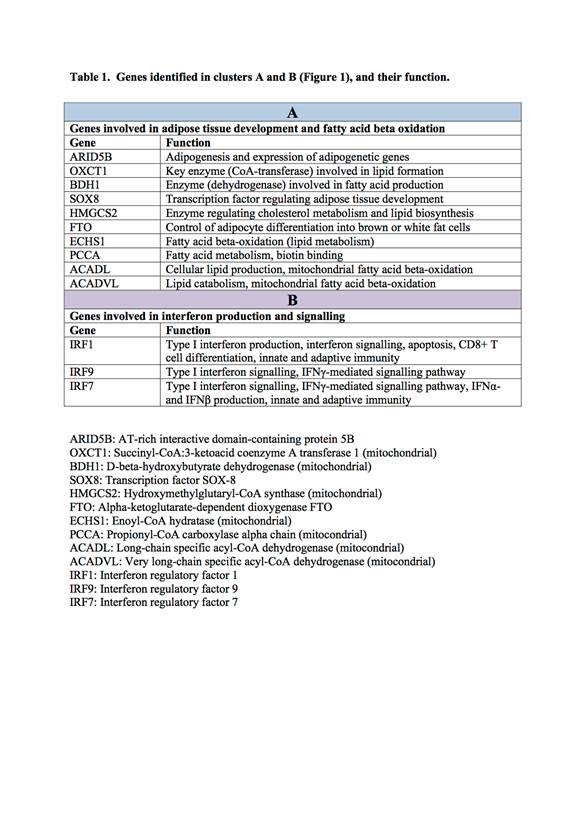Session Information
Session Type: ACR Poster Session A
Session Time: 9:00AM-11:00AM
Background/Purpose: : A characteristic feature of Sjögren’s syndrome (SS) is the destruction of salivary and lacrimal glands mediated by mononuclear cell infiltration. Adipocytes can also occupy a large portion of the salivary gland (SG) tissue area, although little is known about their significance in SS. We have previously investigated adipose tissue infiltration in SG biopsies from SS patients and non-SS sicca controls. Our findings indicated distinct incidence of adipose tissue replacement in SS patients, where adipocytes were detected in IL6 rich regions. We now aimed to examine the development of adipocytes in the SG microenvironment, and delineate their possible involvement in immune reactions.
Methods: A microarray analysis was performed on SG from 6 SS patients and 6 non-SS controls, where the expression levels of genes involved in adipose tissue development were assessed. Real-time PCR was carried out on SG from 14 SS patients and 15 non-SS controls to account for interleukin (IL)-6, IL10 and IL17 mRNA levels. Immunohistochemical staining of frozen SG tissue using IL17 was also conducted.
Results: Upregulated signalling pathways identified in SG of SS patients show prominent adipose tissue development and mitochondrial fatty acid beta-oxidation, including the genes ARID5B, OXCT1, BDH1, SOX8, HMGCS2, FTO, ECHS1, PCCA, ACADL and ACADVL. Genes involved in interferon production and signalling were also detected (IRF1, IRF9, IRF7), in addition to IL6, IL10, and IL17 (Figure 1, Table 1). Higher mRNA levels of IL6, IL17 and IL10 were also observed in the SG of SS patients compared to controls. Moreover, IL17+ cells were observed mostly interstitially in the SG and around adipocytes, also within the focal infiltrates.
Conclusion: Adipocyte development seems to be more prominent in the SG of SS patients at the site of inflammation, where adipose tissue replacement is also evident. Detection of IL17 positive adipocytes in the target organ suggests their involvement in immune reactions.
To cite this abstract in AMA style:
Aqrawi LA, Liaaen Jensen JC, Øijordsbakken G, Ruus AK, Nygård S, Holden M, Jonsson R, Galtung HK, Skarstein K. Signalling Pathways Identified in Salivary Glands from Primary Sjögren’s Syndrome Patients Reveal Enhanced Adipose Tissue Development, As Demonstrated By Microarray Analysis, Real-Time PCR and Immunohistochemistry [abstract]. Arthritis Rheumatol. 2017; 69 (suppl 10). https://acrabstracts.org/abstract/signalling-pathways-identified-in-salivary-glands-from-primary-sjogrens-syndrome-patients-reveal-enhanced-adipose-tissue-development-as-demonstrated-by-microarray-analysis-real-time-pcr-and/. Accessed .« Back to 2017 ACR/ARHP Annual Meeting
ACR Meeting Abstracts - https://acrabstracts.org/abstract/signalling-pathways-identified-in-salivary-glands-from-primary-sjogrens-syndrome-patients-reveal-enhanced-adipose-tissue-development-as-demonstrated-by-microarray-analysis-real-time-pcr-and/


